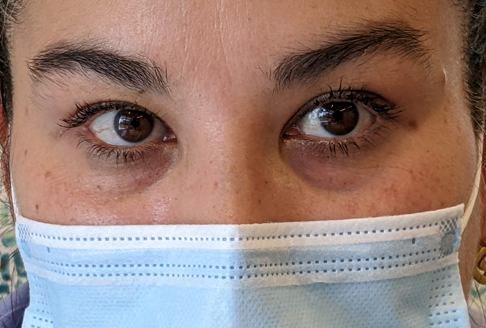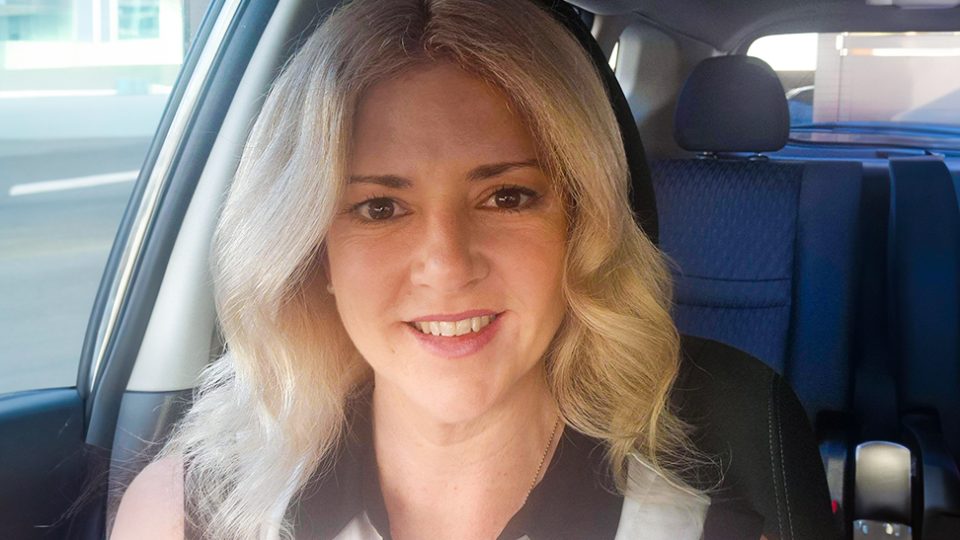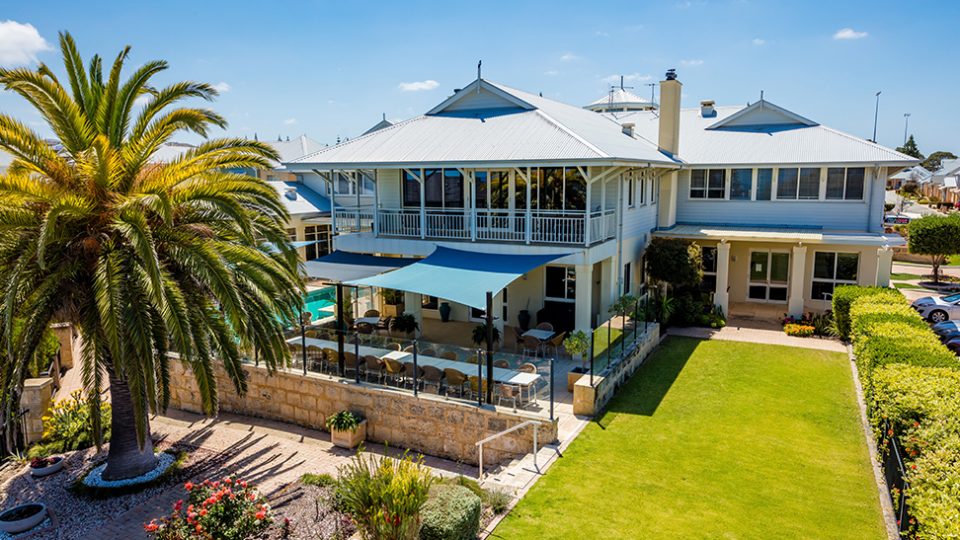For Monica, the eyes have it
- 11 Apr 2023

Great communicators use whatever tools they have available to make a connection.
For Monica Miranda, that means maximising the impact of her eyes.
Monica started work as a Personal Care Assistant at Baptcare Coasthaven Aged Care Community just before the Covid-19 pandemic hit Australia.
This means that (like all staff) she has worn a mask for almost all of her three-and-a-half years at Coasthaven. It is very important that staff wear masks and other PPE as appropriate, as a way to keep everyone safe.
However it means that most residents have never seen her full face.
“They all know us by our eyes,” Monica says.
“Communication is such an important part of our work, customarily we use our whole face when we communicate, but when I’m working I only have my eyes, so I use them as well as I can to communicate with our residents. I try to be the best ‘eye communicator’ I can be.
“The best way to look after someone is to really get to know them. If you know a person’s story you will understand their preferences, and how you can then best meet their needs.
“Before starting this line of work I did a lot of research. Working in aged care was not a random decision.
“I am doing this job for the right reasons – because I believe in caring, and I want to help people. With this industry, you have to be here because you really care. You need patience, tolerance and caring. It is the right job for me because I really enjoy connecting with people.”
Originally from bustling Bogota in Colombia, Monica now calls Geelong home. “Bogota is a very busy city, but in Geelong everything is close. I love heading down to Torquay or Anglesea to walk along the beach,” Monica says.
“When I started at Coasthaven I was the first staff member on the ground floor, when we had only three residents there. Now every room on the ground floor is full, which is great.
“You have to work in other places to really understand how great Coasthaven is. Coasthaven is heaven, because we have staff ratios that allow us to connect properly with the people we care for.
“We have the time to truly do our job properly, and managers who know that care is the absolute centre of everything we do.”
Community news
-

Staff Spotlight: Annabelle Hancock
Meet Annabelle Hancock, Statewide Carer Support Liaison Officer for the Foster and Kinship care team based in Tasmania.
- 06 Jan 2026
-

Staff spotlight: Alicia Johnston
We are very proud of our talented and dynamic workforce and enjoy following their professional work journeys. Roles aren’t static at Baptcare. There is flexibility to grow and develop into different areas, such as Alicia Johnston’s experience.
- 06 Jan 2026
-

BaptistCare to acquire Keyton’s Western Australian retirement village portfolio
BaptistCare is pleased to announce that we have entered into an agreement to acquire Keyton’s portfolio of retirement villages in WA.
- 13 Nov 2025
